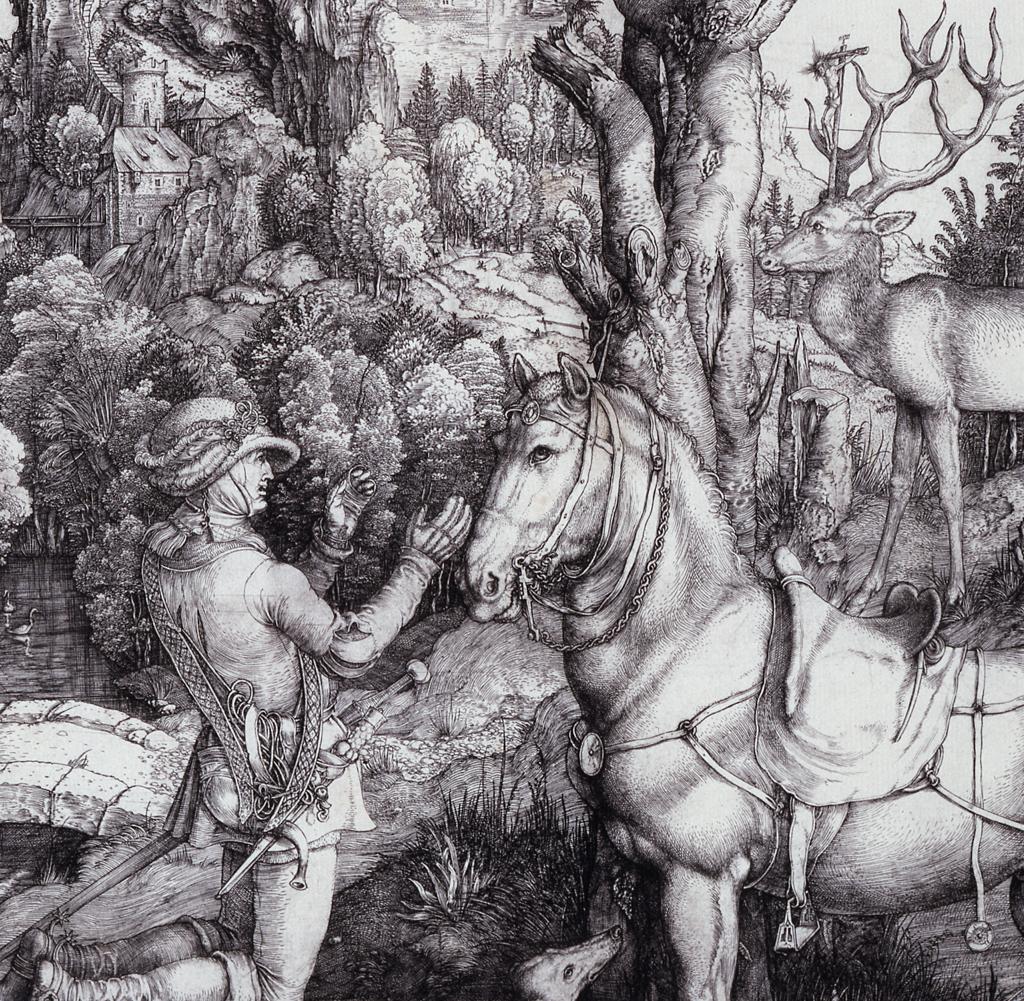The Skillful Representation of Living Organisms
In his works of nature, Dürer demonstrates that he has the ability to combine single elements into a larger whole while retaining the individuality of each at the same time. This is the case with The Large Piece of Turf. In this watercolor, Dürer assembles individual plants, weeds, and blades of grass into a cohesive and unified group. The artist masters the representation of a vivid microcosm, and accordingly, The Large Piece of Turf can be regarded as an artwork in its own right.
Dürer strove for perfection, and in the process, he elevated the status of works such as Study of Rocks or Quarry and A Dog Resting from mere fragments, into exquisite compositions that are valuable and worthy to collect. Occasionally, a date and Dürer’s monogram have been added to his works after the artist had passed away. The authorship of the signature and date on the bottom edge of the cliff in Study of Rocks is unknown. Examinations have confirmed that it was not done by Dürer, but perhaps by someone in the later sixteenth century during the ‘Dürer Renaissance’ (note 1). The individual who dated Study of Rocks likely relied on guesswork; however, the thought process behind placing Dürer’s signature on the watercolor was clearly deliberate. Associating a work with Dürer’s name was strategic because it bolstered its marketability as a prized item. Moreover, Dürer generally placed his monogram on works he considered to be finished products, and thus, the person who cleverly included Dürer’s signature on Study of Rocks wanted to suggest that the image of a quarry is not a preliminary sketch, but rather a finished design.
Dürer’s meticulously arranged works also served as visual resources for his own documentation. On many occasions, the German master carefully considered the type of compositional details he placed side by side in sketches and watercolors to create desired pictorial effects, which he then utilized to similar ends in grander and more complex works. The images in this exhibition visually attest that St. Eustace is a collage of nature studies. Although not identical to the ones in his drawings and watercolors, animals, cliffs, trees (both thick and bare), greenery, and a pool of water appear in the St. Eustace engraving. The print celebrates the natural world and humankind is in harmony with nature.
Notes:
note 1. Walter Koschatzky discusses the technical process of identifying approximately when certain dates have been added to Dürer’s watercolors in W. Koschatzky, Albrecht Dürer: The Landscape Water-Colors, (New York, 1973).
